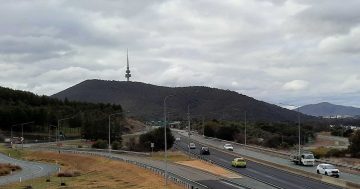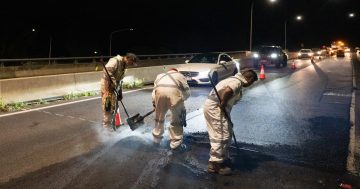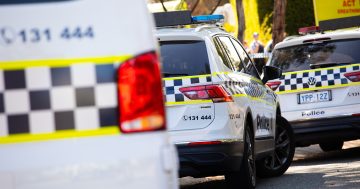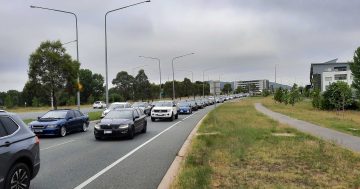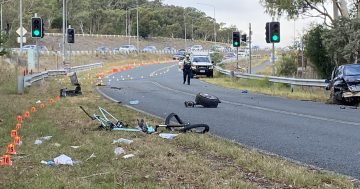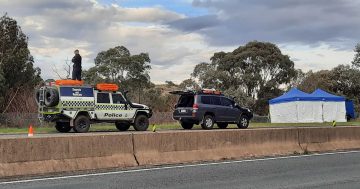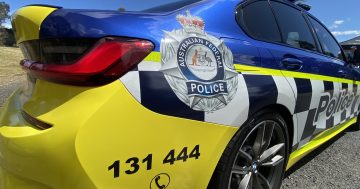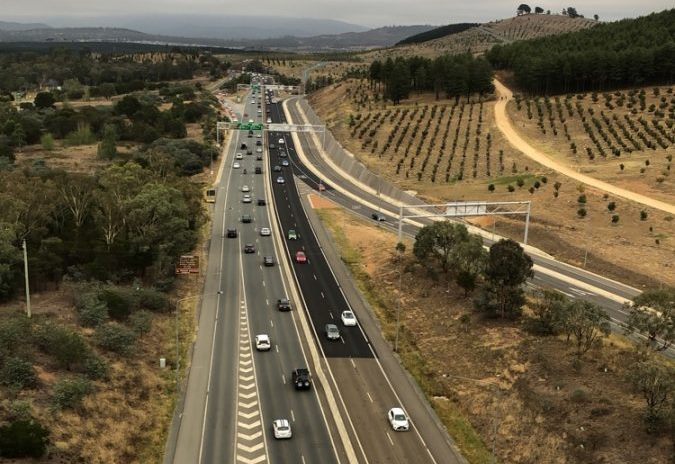
Heading into the Tuggeranong Parkway car trap from the north. Photo: Lachlan Roberts.
There was a lot of money in the ACT Budget for roads but one notorious stretch of bitumen missed out despite the disproportionate impact any accident there seems to have on Canberra motorists.
Last year I wrote about the Tuggeranong Parkway car trap, that stretch of road between the Cotter Road and the Glenloch interchange where even a minor bingle in peak times can mean long delays and missed appointments, kick-offs, and flights, or just being late for work or getting home.
The red zones appear to be near the Arboretum where traffic merges, the Cotter Road off-ramp and the Lady Denman Drive ramps, and accidents invariably involve multiple collisions that take a long time to clear.
These things often come in clutches and the week before last there were two morning crunches – one blocking northbound lanes after a bang-up near the Cotter Road off-ramp that saw traffic backed up to Kambah, the other near the Lady Denman Drive off-ramp that left southbound lanes a car park.
One caller to ABC Radio said he was now a half hour late for a booking with no end in sight to the blockage, lamenting that there must be some design flaw that causes crashes and stops them being cleared more quickly.
Everyone will have their theories – longer merging lanes at off-ramps, more room at the verges, somehow creating more space at that awful cram just past the Arboretum where the speed limit changes, lanes converge and traffic merges from the left when some drivers are looking to veer that direction toward Belconnen. Or just bad driving.
The Government acknowledges that the Tuggeranong Parkway between Cotter Road and the Glenloch interchange is one of the busiest sections of road in the ACT, transporting about 40,000 vehicles per day. “However, this stretch of road doesn’t exist in isolation and the performance of Parkes Way is a significant factor in increasing the reliability of the Parkway,” a spokesperson for Roads Minister Chris Steel, a regular Parkway user, says.
The Government says it has focused on safety in the Budget with five major intersection upgrades and beginning the work to remove intersections along the Monaro Highway, as well as starting the work to fully duplicate Athllon Drive and William Hovell Drive.
The spokesperson says the Parkway and the Glenloch interchange will continue to be monitored and improvements made where needed, especially with the predicted increase in traffic from the Molonglo Valley development but changes to speed limits were not in the mix.
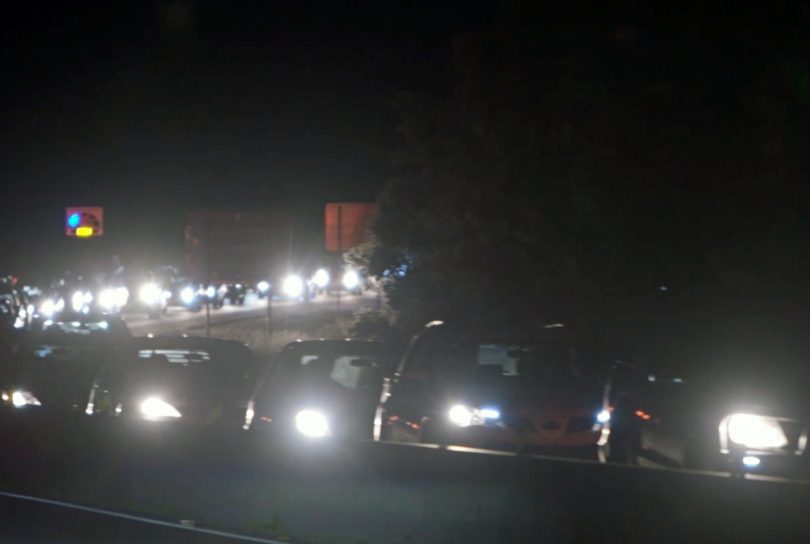
Traffic on the Tuggeranong Parkway was reduced to a crawl after a two-vehicle collision near the Cotter Road turn-off on a Saturday night last September. Another collision occurred when two cars rear-ended each other, causing further delays to traffic. File photo.
Roads ACT monitors the performance of all roads in the Territory and accident data is a leading driver in identifying priorities for improvements.
It says that in the last five years there have been 239 reported crashes on Tuggeranong Parkway adjacent to the Arboretum, while in the same period there have been 46 reported crashes at the on/off-ramps joining the Cotter Road and the Tuggeranong Parkway. Most of these crashes, thankfully, involved property damage only.
So far, in 2019 there has been 21 reported crashes at these two sites, 20 adjacent to the Arboretum and one at the on/off-ramps joining the Tuggeranong Parkway and the Cotter Road. (Note: there is a two-month lead-time for crash data to be cleared and entered into the database.)
But the problem with the Parkway is that when an accident happens there seems to be nowhere to go and the entire north-south link can come to a standstill.
As I said last year, this saps the confidence of drivers in the reliability of the road to take you where you want to be quickly, and places extra pressure on the Cotter Road-Adelaide Avenue route to the city. At least that’s an option. If you are heading to Belconnen or Gungahlin, bad luck.
If nothing else the data points to issues near the Arboretum that scream for attention.
“The unfortunate reality is that it is hard to engineer the human factor on busy roads. Despite that the ACT Government will continue to consider options for improvements to the road,” Mr Steel’s spokesperson says.
In the meantime, choose your travel time and route carefully, and heed the sage advice from the police who have to clean up these messes. “Many of these peak hour collisions are as a result of drivers not leaving adequate distance in front of them to stop safely,” a spokesperson said.












